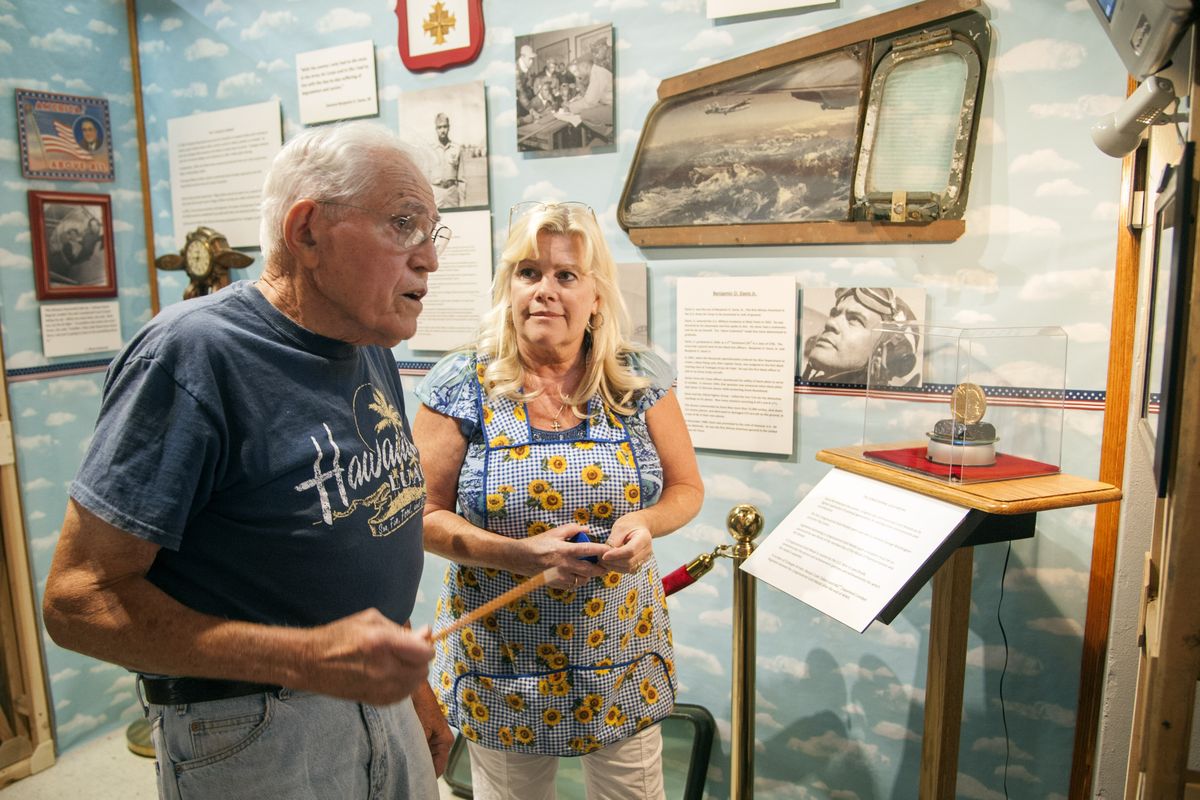Upcoming WWII exhibit at Valley Heritage Museum has local ties

Their generation has been heralded for saving the world. Yet for many who fought during World War II, they had to live with racism and oppression at home while they fought to save others.
The Tuskegee Airmen, the 442nd Regimental Combat Team and the Navajo Code Talkers all stepped up with heroism when their country asked them.
The Spokane Valley Heritage Museum soon will open a new exhibit celebrating these three groups of heroes, and have found local connections as well.
“The Colors of Patriotism” will open Friday. Visitors will learn about a local WWII veteran, Lt. Col. William P. Heaton, who died two years ago.
“He’s our greeter,” said Jayne Singleton, director of the museum. Heaton’s original uniform is on display, as are his many medals, including the Purple Heart, the Silver Star and the Bronze Star.
After Heaton, visitors move on to learn about the Tuskegee Airmen, the first group of African-American pilots in the military.
There are photos of the airmen, one with first lady Eleanor Roosevelt. Singleton said the first lady became an advocate for the Tuskegee Airmen after meeting the pilots.
Another item in the exhibit is a replica of the group’s Congressional Gold Medal, an honor that wasn’t bestowed until recently.
As with many of the exhibits at the museum, there is a local connection to the airmen.
Jack Holsclaw was a graduate of North Central High School. He earned his Eagle Scout rank at the age of 15 – the first by an African American in Spokane – and attended Whitworth College and Washington State College.
He flew with the Tuskegee Airmen during WWII, earning the Distinguished Flying Cross among other honors.
On the next wall, the exhibit celebrates the accomplishments of the 442nd Regimental Combat Team, made of second-generation, or Nisei, Japanese Americans.
During the war, many Japanese Americans were placed in internment camps, but members of the 442nd fought in Europe. Bill Zimmer, a volunteer at the museum, said that although many still had families living in these camps, the 442nd went on to become the most highly decorated unit in the Army at the time.
The unit received its own Congressional Gold Medal and the museum is expecting a replica soon.
Singleton said she has contacted a local member of the 442nd and is interviewing him for the exhibit.
In the Pacific theater during the war, the Japanese military was breaking every code used by the Americans. The solution was to use the Navajo language when transmitting codes. The language had no alphabet and was difficult to learn.
This part of the exhibit was still under construction last week and Singleton said she is still looking for a local connection to the Code Talkers. She said that like every exhibit at the museum, “The Colors of Patriotism” is in a constant state of flux – someone often comes in to see an exhibit and realizes they have something at home to contribute to the story the museum is telling.
For the story of these three groups, one quote that hangs on the wall sums up what Singleton wanted to say when planning “The Colors of Patriotism.” The quote is attributed to Lt. Glenn Rendahl, a B-24 pilot.
“When our nation goes to war, real patriotism has only one race. You are either American or you are not.”